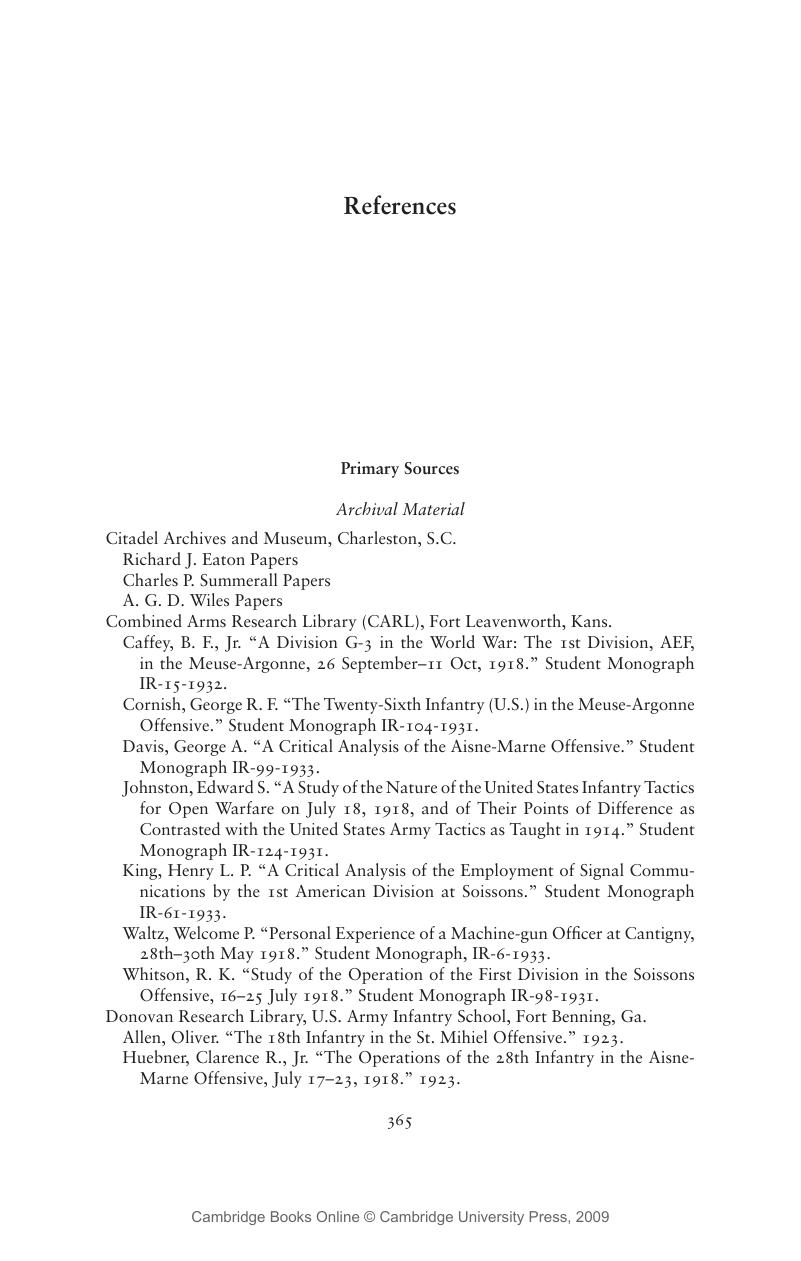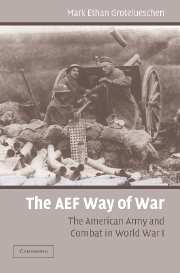Book contents
- Frontmatter
- Contents
- Acknowledgments
- Introduction
- 1 Doctrine, Dogma, and Development in the AEF
- 2 The 1st Division: Training for and Waging Trench Warfare
- 3 The 1st Division: The Search for a “Sufficiently Powerful Fire”
- 4 The 26th “Yankee” Division: Doctrine, Discipline, and Discrimination
- 5 The 26th “Yankee” Division: Doctrine, Demoralization, and Disintegration
- 6 The 2nd Division: Bloody Lessons in “Open Warfare”
- 7 The 2nd Division: The Rise of Set-Piece Battle
- 8 The 77th “Liberty” Division: Training for the Trenches and Fighting on the Vesle
- 9 The 77th “Liberty” Division: Dogma, Delegation, and Discretion
- 10 Conclusions
- References
- Index
- References
References
Published online by Cambridge University Press: 29 August 2009
- Frontmatter
- Contents
- Acknowledgments
- Introduction
- 1 Doctrine, Dogma, and Development in the AEF
- 2 The 1st Division: Training for and Waging Trench Warfare
- 3 The 1st Division: The Search for a “Sufficiently Powerful Fire”
- 4 The 26th “Yankee” Division: Doctrine, Discipline, and Discrimination
- 5 The 26th “Yankee” Division: Doctrine, Demoralization, and Disintegration
- 6 The 2nd Division: Bloody Lessons in “Open Warfare”
- 7 The 2nd Division: The Rise of Set-Piece Battle
- 8 The 77th “Liberty” Division: Training for the Trenches and Fighting on the Vesle
- 9 The 77th “Liberty” Division: Dogma, Delegation, and Discretion
- 10 Conclusions
- References
- Index
- References
Summary

- Type
- Chapter
- Information
- The AEF Way of WarThe American Army and Combat in World War I, pp. 365 - 378Publisher: Cambridge University PressPrint publication year: 2006



